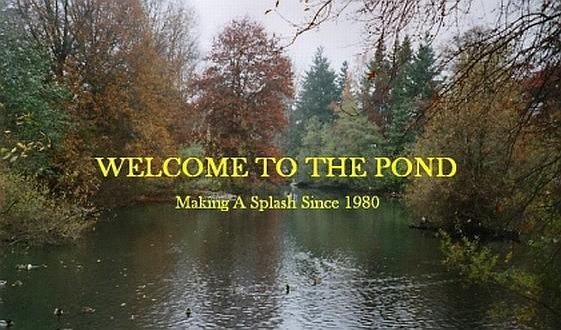A month or two back, Google released the latest update to its Google Earth geographic software. This is no minor update, but a significant addition to Google Earth's capabilities. A few days ago I downloaded GE 5 (waiting for the initial bugs to get worked out). Here are my thoughts on the cool new features:
Ocean view: This is one of the features that has been most talked-about, rumored, requested and wished-for by Google Earth users. Google finally added ocean-viewing capability in version 5 of the software. All you have to do is zoom down to ocean level until your view is submerged.
Personally, I don't think this is nearly as cool as advertised. When you are browsing underwater, you do see a slightly more blue tint to the features plus a view of the geography. That's really it - no fish, reefs, debris or anything other than water and ground. It does look like you're underwater, but it appears as if everything in the ocean is just - gone. Google does have 3-D objects to view if you download KML files, but you'd never find them just browsing around. That's one thing different about the ocean in GE - it's huge! Navigating takes a very long time and you'd do better to search for what you want.
There are, of course, layers to turn on. They're good for learning information, but offer little to the actual ocean browsing experience. I really hope that Google and its partners will continue to add content and perhaps give us something to look at other than bathometry.
Historical images: This feature is very interesting - IF you know what to look for. If you click the icon for it in the toolbar, a time-slider opens with tick marks corresponding to aerial images from years past. Right now, most areas don't have much beyond the early 1990s. I even tried New York City and didn't see anything earlier than the 70s.
Using this feature, you learn that much of any city does not change. Houses last for years and years and most changes occur on the edge of urban areas. However, if you know of areas in your city (or any other) that have changed over the years, you can easily see how things have progressed. For example, I looked at the area near my house and watched it grow from just our house to a street with other houses and infrastructure.
The images take a few seconds to load, so things aren't as smooth as one would like. Once they do load, you can switch back and forth easily. As with the Ocean features, once Google gets more imagery, this feature will be more useful and interesting.
Tours: In the new Google Earth, you can create a tour of your adventures around the planet (virtual or otherwise) and send the file to your friends and family. I haven't used this feature yet, but I have seen tours that have already been recorded. They all come as KML files, making downloading quick and easy. The nicest thing about the tours is that you can pause them and then resume. That is handy when you want to stop and take a look around or spend more time at a particular location.
Mars: Now you can view Mars in addition to Earth and the Sky. I tried Mars out today, and I don't think it's as interesting as I'd like it to be. If you're interested in Mars, it's obviously a cool feature. Perhaps I just need to explore it more. In this feature, you can view all sorts of imagery (even live imagery), historical maps, and even a few tours. This is all great if you like looking at big craters, which Mars seems to have a lot of. I don't know if I'll be using this part of Google Earth too often, but it is great if you're an amateur or professional astronomer. This will also be useful in educational settings, as will be the Ocean feature. Google Earth should come installed on any school computer that can handle it, because its educational possibilities are nearly endless.
In addition to the above features, the thing I'm most excited about is the update of Street View imagery for my hometown. Not every street is available, but there is far more coverage than when Street View was first available here. I've already used it for scouting possible locations for photography. Now we need to get some 3-D buildings for this area (especially the University) and I will be one happy duck.
Thursday, March 26, 2009
Review: Google Earth 5
Subscribe to:
Post Comments (Atom)








No comments:
Post a Comment